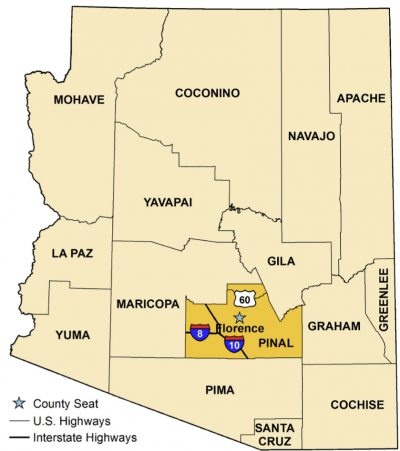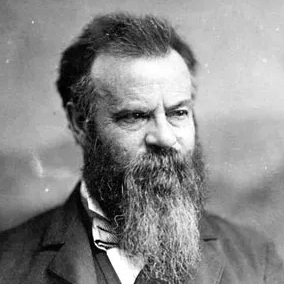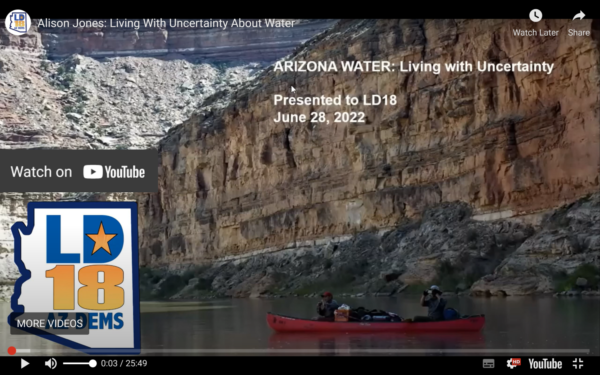To see the video, click on https://youtu.be/Kh56PfIRrBc
Hydro-geologist Alison Jones outlined the grim future of Arizona’s water supply. “It is grim again. Tonight I’m back on the high-grim scale,” she warned. She spoke at the June 28, 2022, general meeting of the LD18 Democrats.
“Remember, this isn’t a drought. This is long-term aridification of the American Southwest. It’s our new normal, and experts say that lakes Mead and Powell are not expected to ever be full again.

“Active Management areas have an objective of Safe Yield. Except for the Pinal AMA—Pinal has a whole different agenda….planned depletion. And yes, that is as bad as it sounds,” she said. Agriculture uses 75% of all water in the state, a percentage that experts had hoped would decline. “The agriculture is still there and we’re building houses out in the desert and creating more demand for water,” she said.
“The title of this talk is Living with Uncertainty,” she said. “But in fact, there are a lot of things that are certain. Groundwater is a finite resource. It doesn’t replenish in the time scale where we live in. We’re pumping 8,000 or 10,000-year-old water out of our basin. When we do pump it, doesn’t replenish on a human lifetime scale. Supplementing with Colorado River works for a while, but we’re not even close to being on track for sustainable yield.”
Phoenix will be unlivable.
“Arizona has done much to conserve since 1957. In fact, Arizona’s population has grown seven-fold, and we are using the same amount of water. That’s a good thing. But we are seeing demand harden. Conservation is becoming more challenging. Augmentation (finding new sources) is something we have to look at. But large-scale augmentation projects could be a decade into the future.”And it’s way out there — 10 or 20 years. The only way I can see around this, ladies and gentlemen, is for agriculture use to go down.
“And that means food prices are going to go way up. We’ll be bringing in food from places where they at least have rain. Another thing we know with certainty is at the current rate of aridification, Phoenix is going to become one of the most inhospitable places to live on this Continent. They say that’s by 2060.
“That seems like a long time away from me. But I was at my neighborhood park the other day and I saw a toddler there and I realized that in 2060, he won’t even be 40 years old yet,” she said.

Magical thinking in the legislature
“I’m seeing a lot of magical thinking in our legislature. One of them is this guy named Lupe Diaz, a state representative who lives in Benson. He’s a pastor and he’s running in LD19 for reelection. You can watch all these sermons online. He said in one of them that God is going to make it rain. He’s really not worried.”
Jones said legislators haven’t changed much since John Wesley Powell’s time. The US Congress sent him to the Southwest in 1869, to look at the Colorado River and see if settlers could have agriculture and farming in the American Southwest, similar to the East Coast and New England.
“All these government officials thought that’s what we were going to have out here. John Wesley Powell came back, and he went before the US Senate. He said, “When all the rivers are used, when all the creeks in the ravines, when all the brooks, when all the springs are used — there is still not sufficient water to irrigate all this land.
“When he said this, the Senate was incensed by his statement. But he was right and we’ve gotta make some hard choices. They’re going to be unpopular. We need some courage in our legislature,” Jones said.
Discover more from Blog for Arizona
Subscribe to get the latest posts sent to your email.

